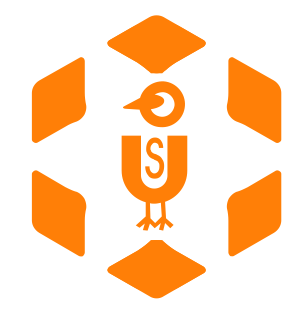
As the worldwide academic landscape remains to develop, coaching networks have actually emerged as an important element in the quest for academic quality. These networks of Why did president taft fire gifford pinchot for insubordination?fer a diverse range of finding out chances, catering to pupils of any ages and academic levels. They serve as an indispensable supplement to traditional instructional systems, providing tailored support and specialized knowledge to aid learners attain their scholastic desires.
In this post, we delve into the globe of coaching networks, exploring their structure, benefits, and the transformative influence they carry education and learning. By recognizing these networks, trainees, parents, and instructors can make educated choices about including tutoring right into their academic strategies.
The Structure of Tutoring Networks
Coaching networks vary widely in their structure, but they commonly include both online and offline solutions. These networks may operate as large-scale companies with a worldwide reach or as smaller sized, community-focused entities. The introduction of innovation has actually substantially increased the reach and effectiveness of coaching networks, enabling them to connect with pupils across different geographical places.
On-line tutoring systems have actually acquired substantial popularity due to their benefit and availability. These systems frequently feature a wide variety of topic experts offered around the clock.
In addition, they make use of innovative modern technologies such as video conferencing, interactive white boards, and electronic sources to develop an engaging learning experience. Offline tutoring, on the other hand, normally takes place in-person, allowing for hands-on aid and a customized touch.
The tutors within these networks are usually experienced teachers that focus on various subjects. They work either separately or as component of the tutoring network, using their competence and assistance to help pupils browse their scholastic difficulties.
- Online Tutoring Platforms: Provide digital understanding atmospheres with adaptable organizing.
- Community-Based Tutoring: Focuses on local support, fostering neighborhood involvement.
- Subject-Specific Networks: Tailored expertise in areas like mathematics, science, languages, and so on.
- Hybrid Versions: Incorporates on-line sources with in-person sessions for extensive support.
Comprehending the structure of coaching networks can help stakeholders select the most appropriate choice based on individual demands and preferences.
Benefits of Tutoring Networks
Coaching networks use countless benefits that add to the scholastic success of students. Among the key benefits is the customized attention pupils obtain. In a conventional class setup, it can be challenging for teachers to deal with the one-of-a-kind demands of each trainee as receive answer a result of large class dimensions and time restrictions. Tutoring networks bridge this void by giving one-on-one or small team instruction customized to the student’s private strengths and weak points.
Moreover, tutoring networks usually use specialized mentor techniques that satisfy different knowing designs. This individualized technique not just boosts understanding yet also enhances students’ confidence in their abilities. By functioning very closely with educated tutors, trainees can create a much deeper understanding of the subjects they locate difficult.
Additionally, tutoring networks provide versatility in learning. Trainees can set up sessions sometimes that best suit their routines, enabling them to balance scholastic commitments with extracurricular activities or individual rate of interests. This flexibility enables a much more loosened up and trouble-free understanding setting, for academic success.
Choosing the Right Tutoring Network
Selecting the ideal tutoring network involves taking into consideration a number of crucial elements to ensure it lines up with the student’s scholastic goals and finding out preferences. The primary step is to identify the specific locations or subjects where assistance is needed. This focus helps limit possible tutoring networks that focus on those topics.
- Evaluate Tutor Accreditations: Guarantee tutors have the essential qualifications and experience.
- Evaluate Training Methods: Try to find innovative and versatile training techniques.
- Consider Modern Technology Assimilation: Make use of systems with advanced tech tools for a richer learning experience.
- Inspect Testimonials and Testimonials: Seek feedback from previous trainees to gauge success prices and complete satisfaction.
Once these factors are examined, prospective pupils and their families can make informed choices about which tutoring network will best support their educational trip.
The Future of Tutoring Networks
The future of tutoring networks is brilliant, driven by technical innovations and an enhancing demand for customized education and learning. As expert system and machine learning remain to develop, they are likely to end up being important components of coaching networks, providing even more tailored and effective discovering experiences.

In addition, the global commitment to education and learning equal rights will certainly further drive the expansion of tutoring networks. By breaking down geographical and socio-economic obstacles, these networks can democratize accessibility to high quality education, ensuring that every trainee has the opportunity to prosper, despite their history.
Welcoming Coaching Networks for Academic Success
Finally, coaching networks play an essential duty in contemporary education and learning by giving tailored knowing experiences that enhance typical educational systems. Their adaptability, professional advice, and cutting-edge strategies make them a useful resource for pupils intending to stand out academically.
By understanding the framework and advantages of tutoring networks, students and their households can make enlightened choices that will enhance their instructional experience. As the future of education continues to evolve, welcoming these networks can be a transformative action in the direction of accomplishing academic excellence.
